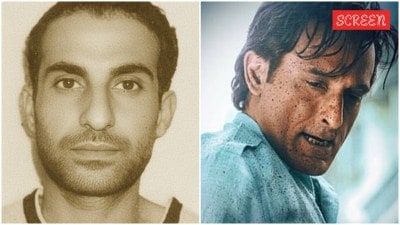Explained: Bail provisions in UAPA, and the case of Cong ex-councillor Ishrat Jahan
A Delhi court has granted bail to former Congress councillor Ishrat Jahan in an UAPA case filed in connection with the 2020 Northeast Delhi riots. What is the case, and what was Jahan's defence?
 former Congress councillor Ishrat Jahan (photo: Facebook @Ishrat Jahan)
former Congress councillor Ishrat Jahan (photo: Facebook @Ishrat Jahan)A Delhi court on Monday (March 14) granted bail to former Congress councillor Ishrat Jahan in an Unlawful Activities (Prevention) Act (UAPA) case filed in connection with the 2020 Northeast Delhi riots.
This was the first time a trial court had granted bail in a UAPA case. Earlier, five persons had been granted bail by the Delhi High Court in the larger riots conspiracy case.
Additional Sessions Judge Amitabh Rawat granted bail to Ishrat Jahan despite the prosecution arguing that there were limitations contained in Section 43D(5) of the UAPA, a provision which makes grant of bail virtually impossible, as it leaves little room for judicial reasoning.
Section 43D(5) of UAPA
The UAPA was enacted in 1967, and later strengthened by the Congress government in 2008 and 2012. To deny bail under the UAPA, the court must be satisfied that a “prima facie” case exists against the accused.
Section 43D(5) reads: “Notwithstanding anything contained in the Code, no person accused of an offence punishable under Chapters IV (“Punishment for terrorist activities”) and VI (“Terrorist organisations”) of this Act shall, if in custody, be released on bail or on his own bond unless the Public Prosecutor has been given an opportunity of being heard on the application for such release:
“Provided that such accused person shall not be released on bail or on his own bond if the Court, on a perusal of the case diary or the report made under section 173 of the Code is of the opinion that there are reasonable grounds for believing that the accusation against such person is prima facie true.”
This provision leaves very little room for judicial reasoning, and makes the grant of bail virtually impossible under UAPA. In the case of Zahoor Ahmed Shah Watali, the Supreme Court in 2019 confirmed that courts must accept the state’s case without examining its merits. However, courts have since read this provision differently, emphasising the right to a speedy trial and raising the bar for the state to book an individual under UAPA.
Prosecution’s arguments
Special Public Prosecutor Amit Prasad had argued that there were two embargoes on the court while considering Ishrat Jahan’s bail application.
He argued that the first limitation is Section 437 CrPC which circumscribes the jurisdiction of the court in relation to offences carrying punishment of life imprisonment or death.
Also, the prosecutor argued, the material/evidence collected against the accused must prevail “until it is contradicted or disproved by other evidence and on the face of it shows the complicity of the accused in the commission of the offence”.
It was argued that the court was required to come to a finding on the basis of broad probabilities after analysing the entire chargesheet and not conduct a mini trial by dissection of evidence.
🗞️ Subscribe Now: Get Express Premium to access the best Election reporting and analysis 🗞️
Ishrat Jahan’s defence
Ishrat Jahan’s lawyer, advocate Pradeep Teotia, had argued that Section 43D UAPA “only puts restrictions but is not an absolute bar to the grant of bail”. He had argued that there is no cogent material in the chargesheet to disclose the commission of a terrorist act.
Limitations on court
On the limitation posed by Section 437 CrPC, the court referred to the provision that allows a person to be released on bail if “such person is under the age of sixteen years or is a woman or is sick or infirm”.
On Section 43D of UAPA, the court said that bail can be denied if it is of the opinion that there are reasonable grounds for believing that the accusation is prima facie true. In the case of Ishrat Jahan, however, apart from the general conspiracy and applicability of UAPA, the material collected against the accused and her role in the larger conspiracy of the riots has to be looked into.
The court noted that the material collected against Ishrat Jahan shows that it was not she who created the idea of a chakka jam, and she was not a member of any WhatsApp group or any organisation involved in this conspiracy.
The court held that even if she was connected to the other accused in the larger conspiracy case, “the fact remains that she was neither physically present in Northeast Delhi for riots nor was she part of any group, or in any CCTV footage, or in any conspiratorial meetings…”
Newsletter | Click to get the day’s best explainers in your inbox
- 01
- 02
- 03
- 04
- 05







































